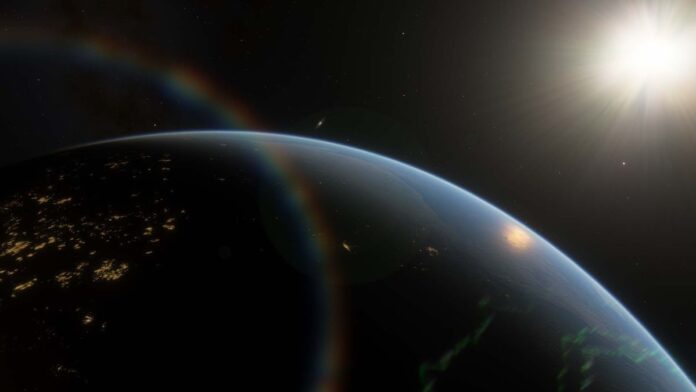Forms of oxygen created by living organisms can be found in space around our planet, a new study has revealed, hinting at a potential new method for tracing life on other habitable planets in our galaxy, the Milky Way.
The new discovery was made by NASA’s now-retired Stratospheric Observatory for Infrared Astronomy (SOFIA), a flying telescope mounted on an adapted Boeing 747. A recently published study describes how researchers used the telescope, which is sensitive to warmth-carrying infrared wavelengths of light, to detect so-called heavy atomic oxygen in upper layers of Earth’s atmosphere, the mesosphere and lower thermosphere.
Heavy oxygen is a form of oxygen that has 10 neutrons in its nucleus, compared to the eight seen in the most widespread form of oxygen present in the air around our planet. High concentrations of heavy oxygen can be found close to Earth’s surface, as this atomic specimen is commonly produced by photosynthetic organisms, just like normal oxygen.
Related: Alien atmospheres: The search for signs of life
“It’s tracing biological activity — that’s well-proven,” Helmut Wiesemeyer, a scientist at the Max Planck Institute for Radio Astronomy in Germany and lead author of the new study, said in a statement (opens in new tab). “So far, the altitude to which this signature extends was thought to be 60 kilometers [around 37 miles] — so, barely the lower part of the mesosphere.”
However, according to the new study, SOFIA was able to detect heavy oxygen up to 120 miles (200 km) above our planet at concentrations that suggest earthly origins. Heavy oxygen can also come from solar wind, the stream of particles constantly emanating from the sun’s atmosphere. The concentrations of solar heavy oxygen, however, are believed to be much lower.
“The question was, does it reach higher altitudes? And if it does, because there are no living organisms up there, the only way to reach higher altitudes would be an efficient vertical mixing [of air in Earth’s atmosphere],” Wiesemeyer said.
The findings may have potential implications for the development of new techniques for the detection of markers of life around exoplanets, planets orbiting other stars than our sun.
“The idea is to first understand what happens in front of your own door before you go into deeper studies elsewhere,” Wiesemeyer said.
The presence of “made-on-Earth” heavy oxygen so high above the planet also suggests that air must be mixing with great efficiency throughout the layers of the atmosphere, something that researchers want to study further to better understand Earth’s system. The discovery may also have implications for climate change research, Wiesemeyer added.
Researchers are keeping an open mind to other possible explanations of heavy oxygen so high above the planet, but if the discovery is confirmed, it would mean that Earth’s biological influence spreads much farther into space than scientists previously thought.
The study (opens in new tab) was published in the journal Physical Review Research in February.
Follow Tereza Pultarova on Twitter @TerezaPultarova. Follow us on Twitter @Spacedotcom and on Facebook.

